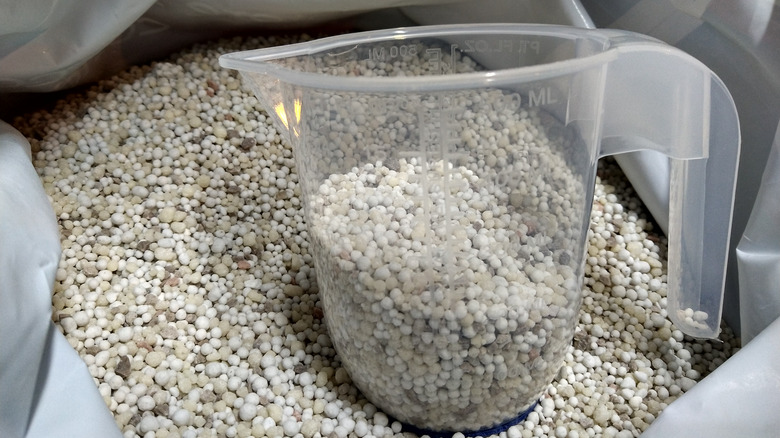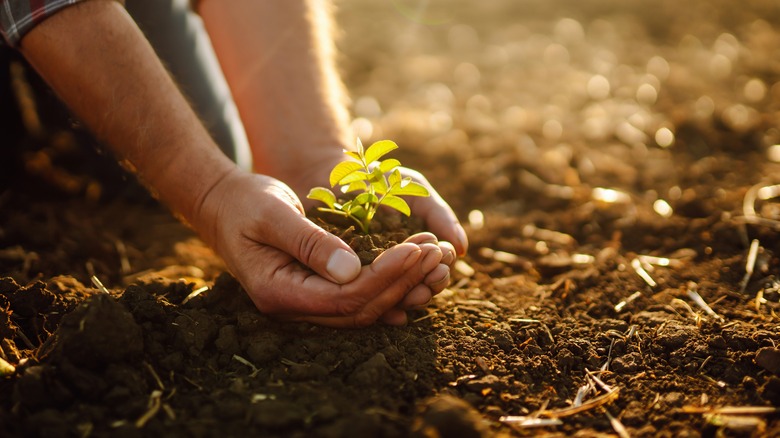How Much Fertilizer Do You Really Need In Your Garden?
When planting season arrives, you want to get your flower or vegetable garden off to a great start. So naturally, you might wonder whether to add fertilizer to the soil and whether you're adding enough. The short answer is to perform a soil test to determine how much, if any, fertilizer is needed. Assessing the make-up and texture of the soil gives you a clear idea of the amount of nutrients in the ground and its pH level. Getting these measurements saves time, money, and of course, your plants.
According to The Old Farmer's Almanac, the best way to obtain this information is to take a sample from the plot to a cooperative extension facility in your community for testing. You should get the results for free or at a low cost. Once you have this information, you'll know what fertilizer to get and how much you need to apply.
Determining the amount of fertilizer
Armed with your soil test results, you'll know which type of fertilizer to get based on the nitrogen, potassium, and phosphorus levels in your soil. Purchase the appropriate fertilizer and start with 1 pound per 100 square feet, according to the Institute of Food and Agricultural Sciences at the University of Florida (IFAS).
But before tearing the package open, check the fertilizer label to ensure the nutrient content has three digits in the pattern, 10-10-10. These numbers depict the nutrient content in the bag, typically 10% nitrogen, 10% potassium, and 10% phosphorus. The Old Farmer's Almanac also notes that you might see a combination of three different numbers, all representing the percentage of the nutrients mentioned above. On the other hand, if you decided to skip the soil test, you might opt for half a pound for that square footage to avoid a nitrogen overload.
Know your plants and your soil
Knowing the type of soil you're working with helps determine how much fertilizer to apply. For example, in the fall, you would take some organic fertilizer, like manure or compost, and add enough to cover the soil with no more than a 2-inch layer. From there, you would till and mix thoroughly at least a foot down. For sandy soil, on the other hand, you would use only ⅒ of a pound of nitrogen per 100 square feet, or for larger areas, 1 pound per 1000 square feet, mentions Cornell University. Specifically, this relates to dry fertilizer with a high nitrogen content that can be spread throughout the garden.
Regarding vegetables, you would add a fertilizer that has 3% nitrogen before planting. Otherwise, you can wait until the plant starts bearing fruit since a high nitrogen level adversely affects the overall yield, per The Old Farmer's Almanac. For perennials, on the other hand, you can stick with the 1 pound per 1000 feet, as noted by Michigan State University. Spreading more along the sides in the middle of the growing season can be beneficial but unnecessary.


